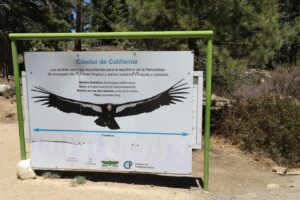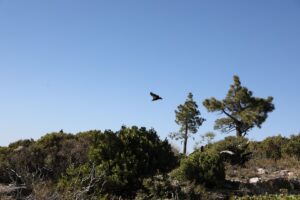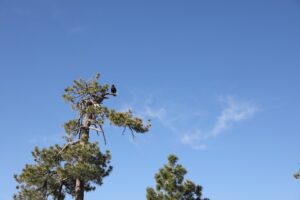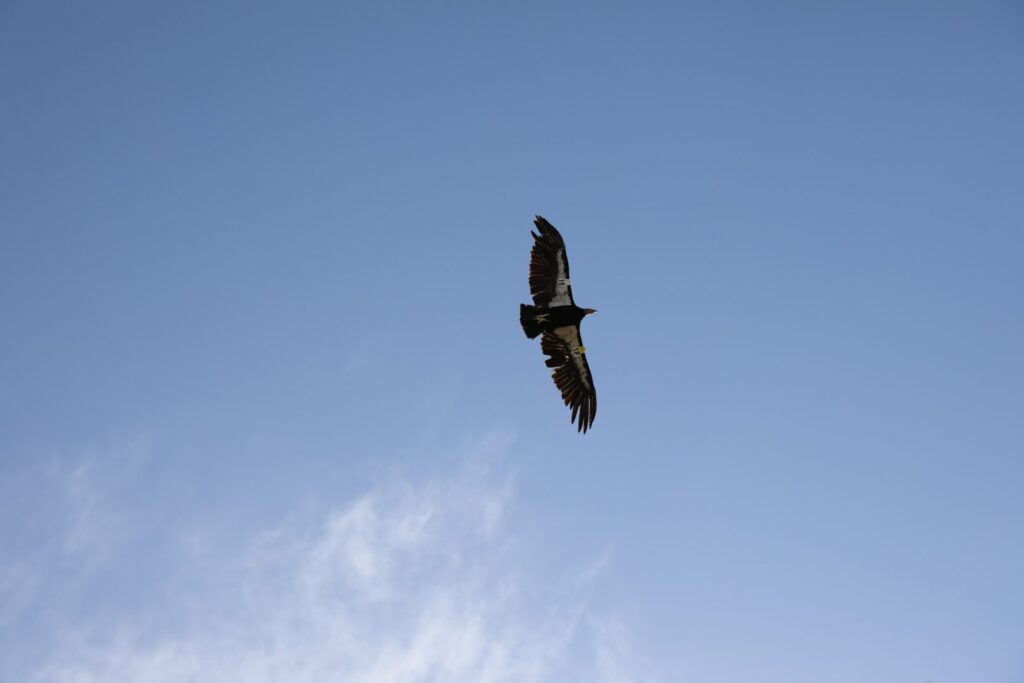In a joint effort between agencies and organizations of the Mexico y United Stateslast weekend, during the past weekend, six specimens of California condor (Gymnogyps californianus) at the Sierra de San Pedro Mártir National Parkin the state of Baja California.
The Ministry of Environment and Natural Resources (Semarnat) highlighted that the recovery of the California condor is an example of multi-institutional cooperation.
Four of the specimens released are from the Chapultepec Zooof Mexico City, and two more from the San Diego Zooin the United States. Subsequently, two more specimens, born in 2022 in the aforementioned zoos, will be transferred to the same national park.

The California condor is the largest bird in North AmericaWith a wingspan of up to 3 meters, they can weigh up to 11 kilograms and measure up to 120 centimeters in total length from beak to tail. It belongs to the vulture family and feeds on carrion of land and marine mammals.
This bird came to dominate the skies over all of western and southern North America, but by 1900, its range was restricted almost exclusively to California.

This majestic species was the victim of gunfire, habitat depletion, lead poisoning from bullet fragments in animal carcasses, and eggshell thinning from the pesticide DDT, leading to near extinction.
In 1939 this bird became extinct in Mexico, while in California the condor population reached dangerously low numbers in the 1980s, with only nine birds in the wild, so the decision was made to capture all remaining birds for a captive breeding program.
Thanks to efforts such as the Species Conservation Action Program: California Condor and the U.S.-Mexico Program for California Condor Recovery little by little this species has been recovering. It is estimated that there are currently just over 200 California condors in the wild, so it is still considered to be in a critical state of extinction.

In 2002, the first reintroduction was carried out at the San Pedro Mártir mountain rangein Baja California. In the following years, releases of condors born under human care continued, and within a few years of their release, the species began to reproduce in the wild. By 2020, there were more than 20 California condors. Currently, there is a free-living population of approximately 42 individuals.
The Binational California Condor Recovery Program has been made possible thanks to the close collaboration with the U.S. Fish and Wildlife Service (USFWS), the U.S. Fish and Wildlife Service Society (USFWS), the San Diego ZooThe project was implemented by the Ministry of Environment, Sedema, the Ministry of Marine and Natural Spaces and Sustainable Development (Endesu), and the Zacango Ecological Park.
Source: Semarnat


